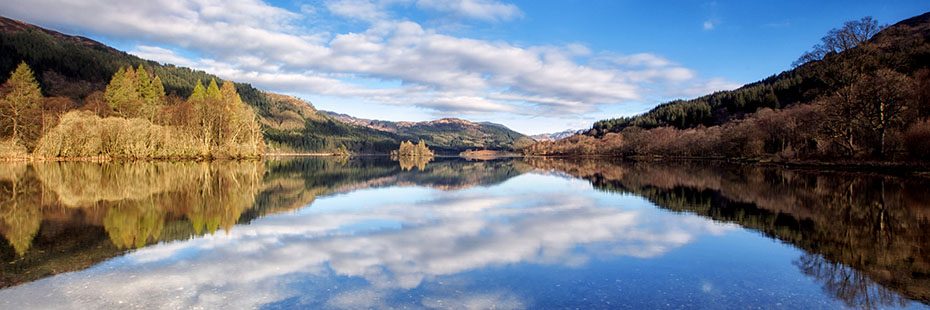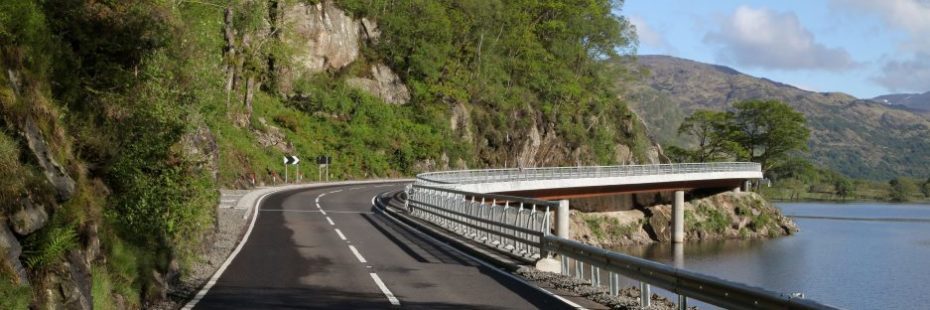
Conservation Outcome C2:
The Park’s special landscape qualities and sense of place are conserved and enhanced with more opportunities to enjoy and experience them.
Why is this outcome important?
Loch Lomond & The Trossachs National Park lies on the doorstep of 50% of Scotland’s population and the special and varied landscapes of the Park attracts over four million visitors every year. Our landscapes include lochs, coastlines, forests and striking contrasts where the lowlands and highlands meet, with significant areas in the north of the Park still retaining a wilder feel. These landscapes have been created and shaped by both natural and human forces over millennia, and are continuously evolving as the climate and the use of the land changes.
Our visitors, many of whom are from urban areas, are drawn to the Park’s beautiful landscapes and have the opportunity to experience and learn about nature first hand. These physical and emotional connections are vital in fostering a sense of understanding, respect and ultimately value for our natural environment.
It is important that we ensure that key areas of the Park where people experience the inspiring vistas found here are recognised and enhanced.

The scenic qualities of Loch Chon (c) John McSporran
This means that key transport routes, such as trunk roads and the West Highland railway line, along with the settlements in the Park, continue to provide good lines of sight to the stunning views of the iconic landscapes found here.
As a society we protect and cherish those things that we value and therefore our role as the National Park Authority is to ensure that the natural environment of the Park is respected and valued by all. Sadly, for some visitors, the concept of respect is less well formed. This can lead to negative impacts in the form of littering and other inappropriate behaviours. We will work to engage and educate with our visitors to promote further understanding of and respect for nature.
A rich mix of natural and man-made features combine to define the scenic diversity of the Park. There is a continuing need to both safeguard and enhance the scenic and experiential qualities of the Park, which lie at the very heart of the identity, attractiveness and economic life-blood of this special place.
Our Priorities for Action:
Conservation Priority 3: The Park Authority will work to conserve and enhance qualities of wildness, cultural heritage features, tranquillity and dark skies by positively managing developments and projects to protect these qualities and by supporting targeted projects which enhance them.
Conservation Priority 4: Supporting projects that enhance opportunities to enjoy landscapes particularly along major transport routes and around settlements and also that better meet the different travel mode needs of visitors, communities and businesses. Priorities include:
- Implementing a strategically planned and designed upgrade to the A82 between Tarbet and Inverarnan;
- Continuing to review landslip management measures on the A83 at The Rest and Be Thankful.
Conservation Priority 5: Landscape enhancements that also deliver improvements for nature such as woodland creation, wetland restoration or tackling invasive non-native species.
Conservation Priority 6: Safeguarding and restoring tranquil loch-shores through the Your Park and Respect Your Park Initiatives.

Pulpit Rock project
Who can help make this happen?
| LEAD DELIVERY PARTNERS INCLUDE: |
| Scottish Natural Heritage |
| Forestry Commission Scotland |
| Transport Scotland |
| ScotRail |
| Police Scotland |
| SUPPORT DELIVERY PARTNERS: |
| Private Land Managers |
| Local Authorities |
| Scottish Land and Estates |
| National Farmers Union of Scotland |
How will we measure success by 2023?
- Landscapes – The percentage of land under agri-environment/woodland schemes, whole farm/estate plans and/or management partnerships.
- Planning & development – The percentage of the Park and/or number of sites with landscape mitigation schemes.
- Visitor experience – The percentage of residents and visitors satisfied with aesthetic quality of landscapes in the National Park.
Questions
|
<< Previous outcome | Next outcome >>

